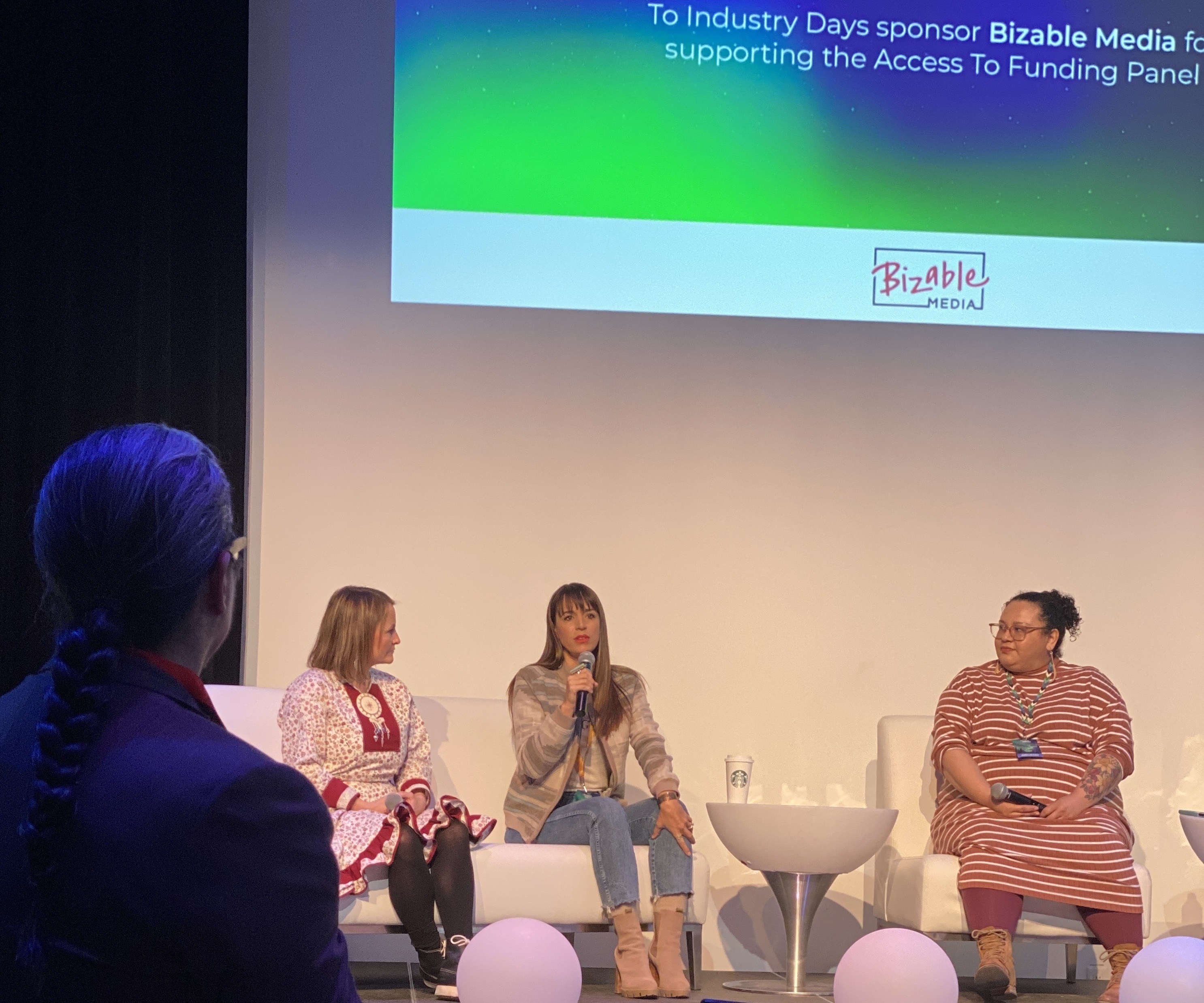
- Details
- By Native News Online Staff
TORONTO–Emmy-award-winning filmmaker, and industry leader Jennifer Loren recently presented her expertise at this year’s imagineNATIVE Film + Media Arts Festival. Part of the festival’s Industry Days, Loren delved into Cherokee Nation Film Office (CNFO) incentives and initiatives to help #morenatives get access to the film industry.
“I am thrilled to be asked to participate in the phenomenal programming hosted by imagineNATIVE,” Loren, a citizen of the Cherokee Nation, said. “It is an incredible honor to partner with an organization that is recognized as the global center for Indigenous media arts and to share in its commitment to creating a greater understanding of Indigenous people and cultures by supporting the diverse work of Indigenous content creators.”
The largest annual Indigenous media arts event in the world, the imagineNATIVE festival highlights film, video and audio, along with featuring interactive media and digital works created by Indigenous artists. These worldwide compelling and distinctive works reflect the diversity of Indigenous nations by showcasing insights into various perspectives, cultures and arts in contemporary media.
Loren’s extensive experience in film and television industries dates back to 2001. She has worked as a documentarian, executive producer, on-camera host and journalist. In 2019, she joined CNFO and was recently named an Oklahoma Film ICON by deadCenter Film. Her other accolades include Woman of the Year by Tulsa YWCA and the Tulsa Mayor's Office, as well as a Great Plains Distinguished Lecturer by Tulsa Press Club.
During the “Access to Funding” panel, Loren explained CNFO’s mission to increase Native visibility in every level of film and television productions as well as develop economic opportunities in Cherokee Nation. With access to approximately 7,000 square miles throughout northeastern Oklahoma, CNFO offers the first-ever Native crew, talent and business/support services databases.
The 23rd annual imagineNATIVE Film + Media Arts Festival is broken down into a two-part in-person (Oct. 18-23) and virtual (Oct. 24-30) a 12-day entertainment event. The festival featured over 147 works from 16 countries in more than 55 Indigenous languages. These include 19 feature films, 13 thematic shorts programs, nine audio works, nine digital and interactive works, six exhibitions, five music videos, and an artist spotlight on visual artist and Mohawk filmmaker Shelley Niro.
As more opportunities blossom for Native filmmakers and creatives, imagineNATIVE offers resources and accessibility to up-and-coming artists through workshops, panel discussions and networking opportunities via its Industry Days. These audience engagement activities focus on themes of pitching and access to stories, space, music and funding.
The festival continues online through Oct. 30.
More Stories Like This
What Inspires Indigenous Ballet Dancer Jock SotoGrand Rapids Public Museum Hosts Indigenous Culture Celebrations
In Case You Missed It: Native Bidaské - Julian Brave NoiseCat on His New Book “We Survived the Night”
Santa Ynez Band of Chumash Indians to Host 19th Annual Culture Day on October 18
Cherokee Nation Collaborates with DreamWorks and NBCUniversal to Bring Cherokee-Language Dub of How to Train Your Dragon
Help us tell the stories that could save Native languages and food traditions
At a critical moment for Indian Country, Native News Online is embarking on our most ambitious reporting project yet: "Cultivating Culture," a three-year investigation into two forces shaping Native community survival—food sovereignty and language revitalization.
The devastating impact of COVID-19 accelerated the loss of Native elders and with them, irreplaceable cultural knowledge. Yet across tribal communities, innovative leaders are fighting back, reclaiming traditional food systems and breathing new life into Native languages. These aren't just cultural preservation efforts—they're powerful pathways to community health, healing, and resilience.
Our dedicated reporting team will spend three years documenting these stories through on-the-ground reporting in 18 tribal communities, producing over 200 in-depth stories, 18 podcast episodes, and multimedia content that amplifies Indigenous voices. We'll show policymakers, funders, and allies how cultural restoration directly impacts physical and mental wellness while celebrating successful models of sovereignty and self-determination.
This isn't corporate media parachuting into Indian Country for a quick story. This is sustained, relationship-based journalism by Native reporters who understand these communities. It's "Warrior Journalism"—fearless reporting that serves the 5.5 million readers who depend on us for news that mainstream media often ignores.
We need your help right now. While we've secured partial funding, we're still $450,000 short of our three-year budget. Our immediate goal is $25,000 this month to keep this critical work moving forward—funding reporter salaries, travel to remote communities, photography, and the deep reporting these stories deserve.
Every dollar directly supports Indigenous journalists telling Indigenous stories. Whether it's $5 or $50, your contribution ensures these vital narratives of resilience, innovation, and hope don't disappear into silence.
 The stakes couldn't be higher. Native languages are being lost at an alarming rate. Food insecurity plagues many tribal communities. But solutions are emerging, and these stories need to be told.
The stakes couldn't be higher. Native languages are being lost at an alarming rate. Food insecurity plagues many tribal communities. But solutions are emerging, and these stories need to be told.
Support independent Native journalism. Fund the stories that matter.
Levi Rickert (Potawatomi), Editor & Publisher

